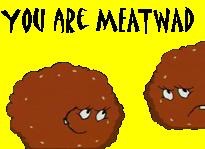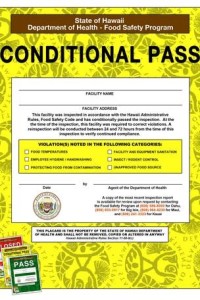Food safety friend Michéle writes:
As part of my daily public health mission, I track foodborne outbreaks and teach food safety. I do the latter to try to reduce the former. Anywhere, anytime, anyway I can introduce it into conversation. Because everyone should be served safe food.
 Recently, on a rare night out, I was trying to order a hamburger from a small regional restaurant.
Recently, on a rare night out, I was trying to order a hamburger from a small regional restaurant.
The conversation progressed like this:
Waiter: Do you want that burger with ‘some pink’ or ‘no pink?’
Me: Can you tell me what temperature equals ‘some pink’?
Waiter: We don’t cook to a temperature. We cook to ‘some pink’ or ‘no pink’.
Me: Color is not an indicator of doneness. Please ask the chef to cook my burger to 155 degrees F.
Waiter: Our burgers have no dyes. We can only do ‘some pink’ or ‘no pink’.
 As a food safety professional, I was concerned with this. As I mentioned to the waiter, “some pink or no pink” is not an indicator of doneness. Numerous meat chemistry factors play a role in influencing color and can result in premature browning, which is why color is not a reliable indicator.
As a food safety professional, I was concerned with this. As I mentioned to the waiter, “some pink or no pink” is not an indicator of doneness. Numerous meat chemistry factors play a role in influencing color and can result in premature browning, which is why color is not a reliable indicator.
So I reached out to the restaurant’s customer service representative via Twitter and email, asking about their beef procedures. Ever the educator, I even provided resources for them to review, in case it proved helpful to their response. www.cdc.gov/nceh/ehs/ehsnet/plain_language/restaurants-ground-beef-handling-cooking.pdf
To their credit, the company seemed happy to respond and explain their hamburger handling processes, and I received a reply from their “Chief Strategy Officer.” Unfortunately their explanation of safe meat handling was NOT correct, and definitely NOT food safe:
From their email:
“The dangers in ground beef have to do with the grinding process, the potential contamination comes from the exterior of the animal. Steak is safe to eat raw because it is only the interior of the animal and it does not get ground up with any exterior parts of the animal. The bacteria cannot pass into the internal flesh unless it is ground in. We grind in house so there is no surface coming in contact with our beef.”
The email goes on to explain:
“We don’t sell our hamburgers based on temperature because we hand-form our burgers and therefore they have different internal temperatures throughout the patty as there are different thicknesses. We cook our burgers based on time, less time for a pink and more time for no pink. The terms do somewhat relate to the color but are more ways to describe less cooked and more cooked.”
 Ouch! That’s scary. Shouldn’t their cook terms be related to a number of degrees, not a hue of red?
Ouch! That’s scary. Shouldn’t their cook terms be related to a number of degrees, not a hue of red?
Unfortunately, they are not alone. The U.S. Centers for Disease Control and Prevention found that many restaurants prepare and cook beef in ways that could lead to undercooking, and that about one-in-10 restaurant hamburgers are undercooked. Their recommendations are that establishments should measure the final temperature of ground beef using a thermometer or using standard cooking methods that always cook ground beef to 155°F for 15 second to prevent foodborne illness. FDA agrees.
Beef, even beef ground on-site, it not without risk. E. coli normally lives in the intestines of animals and the infectious dose is very low. (According to BugCounter Don Schaffner dose response models for pathogenic E. coli indicate even a single cell holds the probability of causing illness.) E. coli on the outside of a hunk of beef such as chuck, roast or steak can be mixed into the middle of a burger – the place that takes the longest to reach 155 degrees F and become safe. Irradiation or cold pasteurization can reduce risk, but other food safety assurance steps must also be in place.
In the company’s discussion of their hamburger handling process, there is no mention of cross-contamination controls. Sanitation. Active managerial oversight. Strict supplier control. Microbial testing and certificates of analysis. Handwashing?
They did, however assure me that “The FDA does allow for the sale of rare meat so long as you print warning about potential foodborne illness on your menu which we have.”
True. But advisories and Disclaimers don’t make for a safer food product. Or negate an establishment’s responsibility to take the numerical temperature of food.
Color is a lousy indicator. Make safe food. Stick it in. Use a thermometer.

 The drives were conducted as part of ‘Operation Ruchi,’ the state-wide food safety initiative launched by the Health Department to restrict the use of chemicals and other harmful ingredients in food articles. Sivakumar said the initiative was a big success during Onam season and raids would be continued in the coming days.
The drives were conducted as part of ‘Operation Ruchi,’ the state-wide food safety initiative launched by the Health Department to restrict the use of chemicals and other harmful ingredients in food articles. Sivakumar said the initiative was a big success during Onam season and raids would be continued in the coming days.










